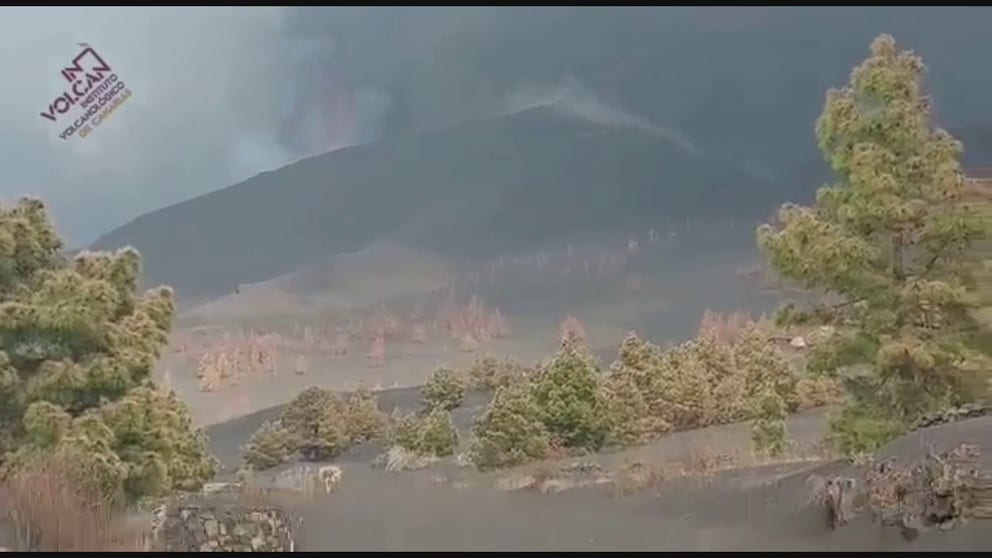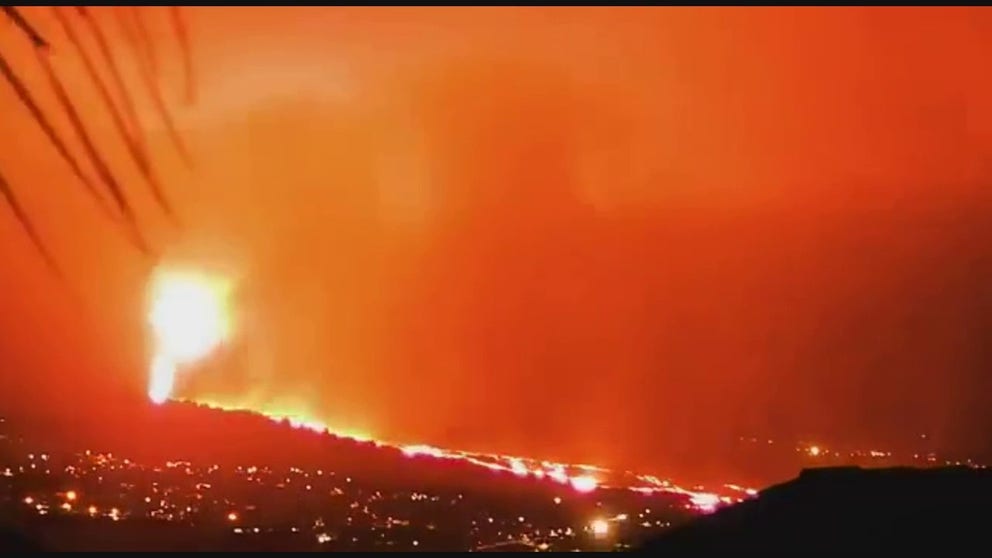Watch a volcano make its own weather
Watch the erupting volcano on the Canary Islands conjure lightning.
As if spewing a fountain of molten lava high into the air and rocking La Palma, Spain, with 152 earthquakes, wasn’t powerful enough this volcano creates its own weather.
This was the scene Saturday of lightning in the ash cloud rising 2.4 miles into the sky. La Palma is one of the Canary Islands, which is off the coast of Morocco.
Cumbre Viejo volcano creates lightning
A lava fountain and fissure on the Cumbre Viejo volcano erupting on October 11.
The Cumbre Vieja volcano started erupting on Sept. 19. The last time it blew was 1971 and 1949 before that. Scientists from Spain’s National Geographic Institute report explosions, lava fountains from many vents, lava flows, and ash plumes. The lava is about 2,000 degrees Fahrenheit and rapidly heats the air above it.
Think of the hot air like a balloon that will keep rising until it hits air of the same temperature (stability). The cooling causes water vapor in the air to condense on pieces of ash, and we get a pyrocumulus cloud. The U.S. Geological Survey also calls them flammagenitus and fire clouds. This is one of the fissures. Watch the pyrocumulus cloud above it.
We already have the updrafts from the hot air. When the water and ice droplets are heavy enough, gravity takes over and they fall, the downdraft. The friction between the droplets and ice caught in up and downdrafts creates electrical charges which build up in the cloud. Then ZAP, the cloud discharges the electricity. For example: Drag your feet with socks across the carpet, then touch something. That shock is the discharge.
The same pyrocumulus clouds form over intense wildfires. Wildfires burn up to 1,500 degrees Fahrenheit.
Here is a lava vent with lightning from a pyrocumulus cloud at night.

